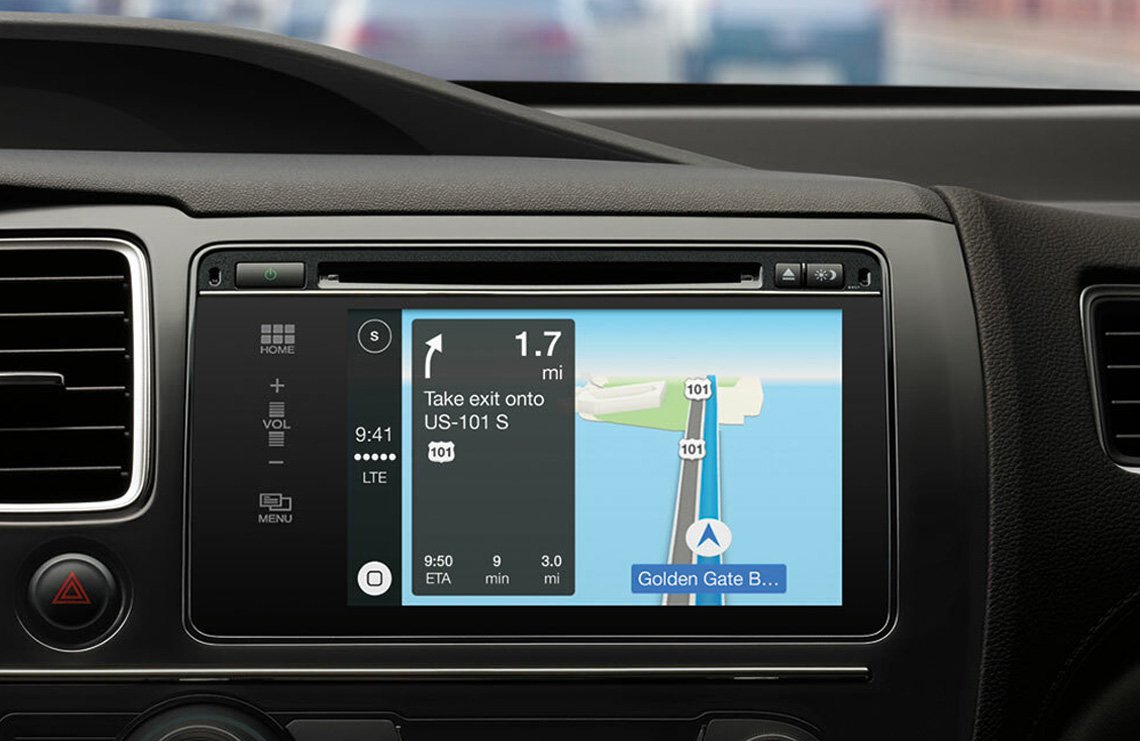
Taking it to the road.
Bringing Apple’s state-of-the art design thinking to the automobile.
-

iPod in the Car
Apple had been experimenting with automobile interfaces dating back to iOS’s iPod Out feature for iOS version 4, circa 2010. iPod Out allowed iPhone and iPod owners access to their entire digital music library through their automobile’s entertainment system, replacing the automaker’s UI entirely with one designed by Apple. In an era where automobile interface design was clunky and difficult to use, this brought Apple customers a recognizable and intuitive way to interact with their music while on the road. We worked closely with our partners at BMW to make this work seamlessly.
But more importantly, our primary concern was keeping drivers safe while using our UI.
The pursuit of a safe experience inspired me to think of solutions that didn’t require the user to look at the screen to browse through their music. This germ of an idea followed me through my career as I tackled various media consumption interfaces. I called this “auditioning” music and it was informed by a behavior most drivers already did while using their automobile’s terrestrial radio systems—they scan through radio stations until they hear something that suits their taste. We eventually settled on using the Shuffle feature to solve for this need, but I still felt there was a more satisfying solution to be invented. Sometimes, maintaining a familiar interface is the reasonable thing to do.
While creating iPod Out, we found ourselves imagining a more robust experience. One where users could access their contacts, voicemails, and other aspects of the iPhone interface, directly replacing the subpar experiences automobile manufacturers had been producing for years: a feature now known as CarPlay.
Getting iOS into the Car.
Safety was just as important as it was for iPod Out when I began working on this project; perhaps even more critical because the functionality encouraged more moments to interact with the interface. Starting with music, when users approach UI for media consumption, they find themselves in two mental states: they’re either looking for something specific, or they don’t really know what they want and instead prefer to react to suggestions. We agreed the former would be solved by Siri. In fact, we originally decided we wouldn’t offer a keyboard for typed entry across all of CarPlay, but eventually it made its way into location searching for navigation. But the latter still didn’t have a great solution. In an attempt to solve for the latter, and to also minimize visual distraction, I investigated experiences that would announce the navigational hierarchy as the user browsed through their content. The system would announce what section the user is currently browsing, and allow them to preview quick snippets of music while navigating with the automobile’s steering wheel or knob controls.
Beyond the interface challenges, perhaps equally challenging was supporting the various input mechanisms available in any given vehicle—touch, gesture pad, knob or joystick. And often, a hybrid of some of them. This meant ensuring that the interface adapted to whatever input of the car the driver owned, and to the various screen sizes available, while also visually presenting it in an entirely new way. MacOS had long been designed to be responsive to screen size, but iOS hadn’t yet become as adaptive as it would later become with iPadOS. And there was no framework for offering touch interface along with joystick control (which of course would come much later as well, with iPadOS). So there was a lot of foundational work that had to be established for iOS to accommodate these new environments.
We had to work closely with our automotive partners to ensure latency and screen quality was acceptable enough to match our customer’s expectation of an Apple-caliber experience. To achieve this, we premiered with a white-list of iPhone apps that were deemed acceptable for drivers (and auto manufacturers) to have access to from this interface. We were selective with which vehicles were white-listed to support CarPlay, leaving the road to adoption perhaps slower than some of our customers would like. Though that was a short-lived concern as today it’s now offered by all 60 major automotive brands, excluding Wuling, Rivian and Tesla Motors.
















